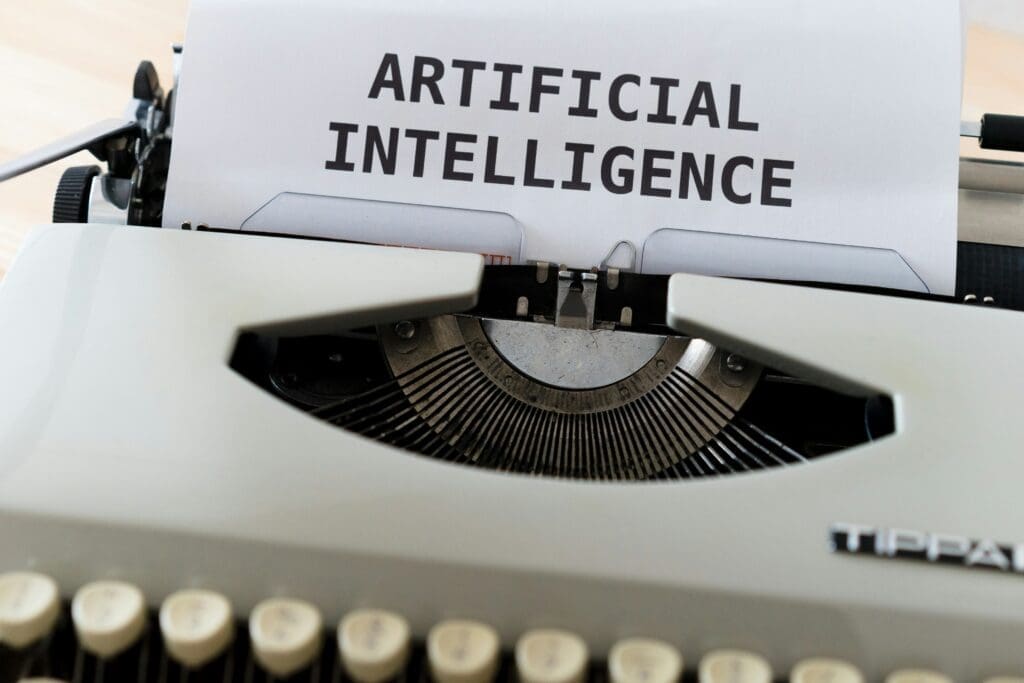Artificial Intelligence Appreciation Day

Happy Artificial Intelligence Appreciation Day!
Since it has been a consistent talking point for several years, artificial intelligence (AI) was destined to receive its own holiday. That’s right, every year on July 16, tech companies, brands, and academic institutions around the world use this day to celebrate AI and the many ways it transforms our lives. But what is AI—and is it worth appreciating? This blog attempts to answer those questions while briefly exploring the history, etymology, advantages, and disadvantages of this (sometimes) controversial concept.
What Is AI and When Did it Appear?
According to tech titan IBM, artificial intelligence (AI) is: “technology that enables computers and machines to simulate human intelligence and problem-solving capabilities.” That encompasses a lot! While we don’t intend to explain the myriad of practical uses for AI since its inception centuries ago (you read that right), we do think it’s worth exploring where the notion started.
Although AI has seemingly taken on a life of its own in the last year or so, the idea of artificial intelligence isn’t new. Stories of “living” inanimate objects that can think and act like humans (with or without free will) have existed for millennia. The ancient Greeks told tales of Talos, a living statue and guardian of the isle of Crete, forged by Hephaestus and defeated by Jason and the Argonauts. Paracelsus, a 15th-century Swiss alchemist, wrote detailed—if dubious—instructions for the creation of homunculi: artificial, human-like beings. Even the monstrous protagonist of Mary Shelley’s Frankenstein could be considered to have had “artificial intelligence,” given that it was both manmade and had the capacity for thought.
The term artificial intelligence is a relatively recent addition to the English lexicon. Alan Turing, the “father of computer science” who proposed the question, “Can machines think?” did not cite “artificial intelligence” in his seminal essay Computing Machinery and Intelligence. That credit goes to American computer scientist and cognitive scientist John McCarthy. He coined the term artificial intelligence in 1955, when he called for a two-month, ten-person research conference on the subject. McCarthy proposed “An attempt…to find how to make machines use language, form abstractions and concepts, solve kinds of problems now reserved for humans, and improve themselves.”
The Dartmouth Summer Research Project on Artificial Intelligence was held over the summer of 1956. Essentially an extended brainstorming session, it achieved no significant breakthroughs in the development of machine learning. However, the exchange of ideas cemented artificial intelligence as the go-to term for the concept of a thinking machine. Though the conference was not widely publicized, the research and ideas it generated—such as machine learning and neural networks—remain relevant to this day.
Appreciating AI in 2024
Now, nearly 70 years after the Dartmouth Conference, enthusiasm for AI is greater than ever. People use generative AI tools like ChatGPT, Midjourney, Jasper, and Dorik AI to “create” visual art, flavorful writing, and inviting websites. It can certainly save time and effort.

Is that reason enough to celebrate?
The Origin of AI Appreciation Day
AI Appreciation Day was created by A.I. Heart LLC in 2021 to “celebrate the history and accomplishments of A.I. tech and raise awareness about its current and future use cases in human life.” A.I. Heart LLC—whose domain name is up for grabs—is a New York-based company that, based on archived pages from its website, sells AI Appreciation Day apparel and hopes to pitch A.I. Eve, a film “made for A.I. humanity and for the movies.”
Okay, so, maybe the holiday itself isn’t glamorous. But we can still value the advancements AI has made, right? The following articles provide insight on just a couple examples in which machine learning and other forms of AI have enhanced our ability to better the world: “University of Alaska Fairbanks develops [machine learning] to aid wildlife conservation” and “Australian National University helps astronomers see further with AI.”
Potential Pitfalls of AI
As with any great advancement, there are always pitfalls—and we would be remiss not to mention them. The following article does a thorough job explaining the pluses and minuses of using the popular generative program ChatGPT: “15 Benefits of ChatGPT (+8 Disadvantages).”
If you are considering using ChatGPT to do your next writing assignment for you, you might want to think again. Such programs don’t fool professors. Without giving away all their secrets, rest assured schools use tools to detect ChatGPT-generated text through language analysis and pattern recognition. In addition, AI may have even bigger costs, as discussed in the article “Generative AI’s environmental costs are soaring — and mostly secret.”
ProWrite and Generative AI
Like most industries, technical writing has been touched by AI, specifically generative AI, which is used to produce content including text, imagery, audio, and synthetic data. Technical writers must be aware that one of the primary challenges posed by using generative AI is the handling of sensitive data, which is a risk ProWrite is not willing to take. At ProWrite, we embrace technological advancements, and we are not against exploring tools that make our processes more efficient. But with a solid 40+ years in the technical writing industry using “real” intelligence and skills, we are confident we can continue to serve our clients as well as or better than before. Contact us to find out more about what we do and how we can help you create the documentation you need.
To schedule a Discovery Meeting with the ProWrite Team, please visit our Calendly page to find the date and time that work best for you. We’re looking forward to connecting with you soon.
Posted in Blog
